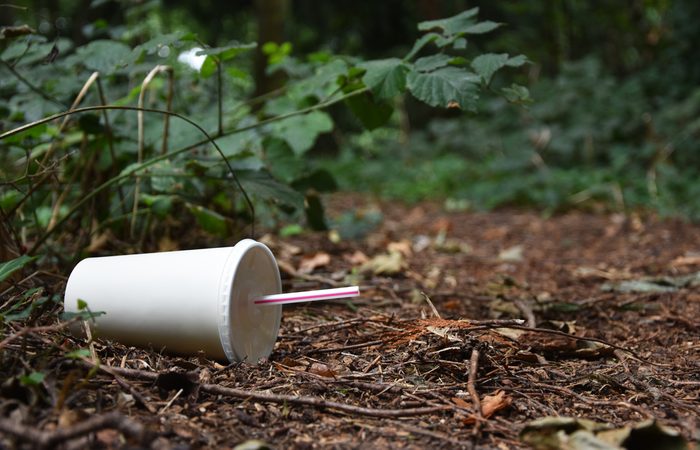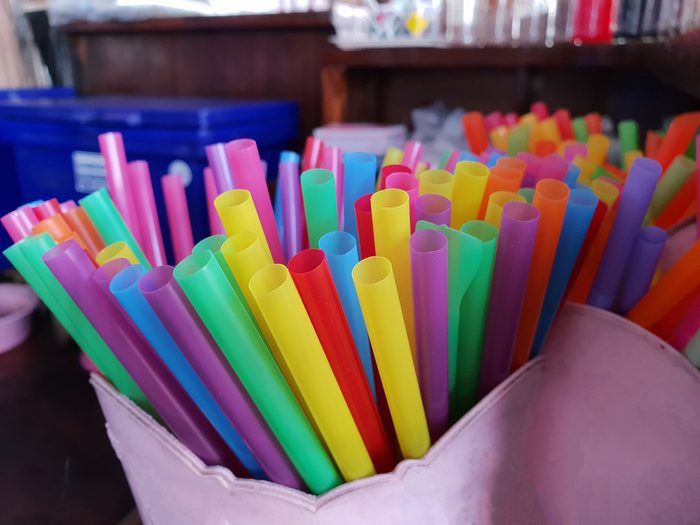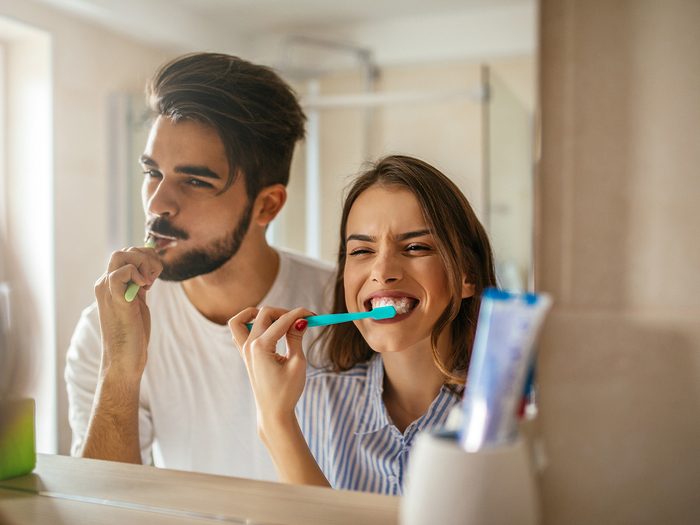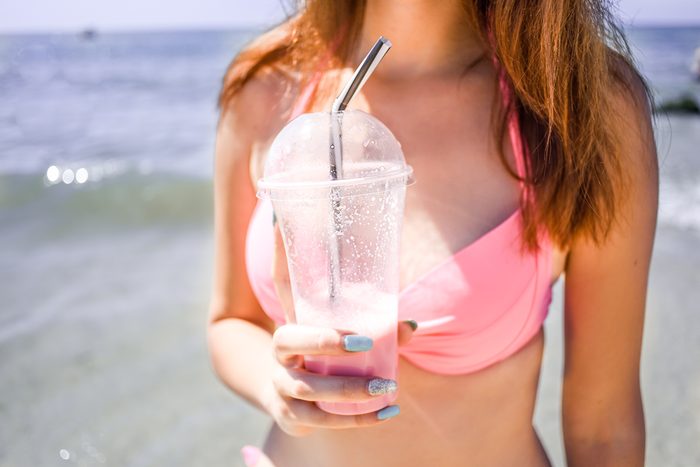Why plastic straws suck
You’ve probably heard how bad plastic straws are for the environment. Media has actually dubbed this the “Summer of Plastic Straw Bans.” It started with a viral video of a sea turtle, followed by a Kardashian-West declaration, and has since grown into a global social media movement (#StopSucking). Starbucks has vowed to stop using plastic straws globally by 2020, reports Global News and other retailers are following suit. Here are six more reasons why you should ditch the plastic straw.
Gas and bloating
Using a straw means sipping on more than just a beverage. You’re also ingesting excess air which is called aerophagia. “The build-up of excess air in the gastrointestinal tract may translate into more burping to release the ingested air,” says Dr. Nesochi Okeke-Igbokwe. Similar to using a straw, eating food too fast and drinking super carbonated beverages could contribute to swallowing a lot of air too, she says. Here’s how your body changes when you start drinking enough water, with or without a straw.
Plastic straws are a start but Canadians really need to reduce their overall use of plastic. By 2050, experts say there will be more plastic than fish in the ocean.
You can develop wrinkles
According to dermatologist and RealSelf contributor Dr. Sejal Shah, sipping through a straw is one of the everyday habits that cause wrinkles. Using a straw on a regular basis means your muscles are going through the repetitive motion of pursing the lips. Yahoo! Lifestyle reports that repeating this movement breaks down the collagen near your mouth, causing permanent skin creases.
Have you heard the controversy over coconut oil? Here’s why a Harvard professor is calling it “pure poison.”
You could be at a higher risk for cavities and tooth decay
Drinking from a straw seems like a good solution for avoiding cavities and tooth decay, but it might not be as fool-proof as you think. “The sugar from sodas or the acid from wine and coffee still touches your teeth even when drinking through a straw,” says Dr. Kami Kohani, a dental surgeon. “You may be sending the brunt of it to your molars, where cavities are most likely to result.”
You can stain your teeth
Dr. Mark Burhenne, a dental surgeon, adds that using a straw doesn’t prevent staining either. It all depends on where the straw is near your teeth. According to Dr. Burhenne, the only way straw use could potentially protect the teeth is if the tip of the straw is in the back of the mouth and the liquid goes straight to the throat without touching the teeth. “Of course, at this point, it’s more like taking a shot than enjoying a juice or coffee, and defeats the whole purpose of drinking it,” Dr. Burhenne says. All that liquid sending you to the washroom? Here are 7 reasons why you need to pee all the time.
You could potentially gain weight
According to the Washington Post, straws could cause you to drink more than if you use a glass or cup— and if you’re sipping on high-calorie beverages, you could gain weight. Plus, drinking through a straw neutralizes the smell of a drink which could also lead to overconsumption, according to the Telegraph. That said, using a straw won’t automatically lead to weight gain, but it could make it more challenging to limit your drink calories. You’ll also want to skip these 20 foods that are never worth the calories.
Your body could be subject to chemicals
Plastic straws are typically made from polypropylene, a type of plastic made from petroleum, the Washington Post reports. And although the Food and Drug Administration finds polypropylene food-safe, chemicals from the plastic could leach into water, the Post reports. Research published in the journal Science also shows that the compounds could affect estrogen levels in humans.
Next, find out 10 surprising foods that will most likely give you gas.







